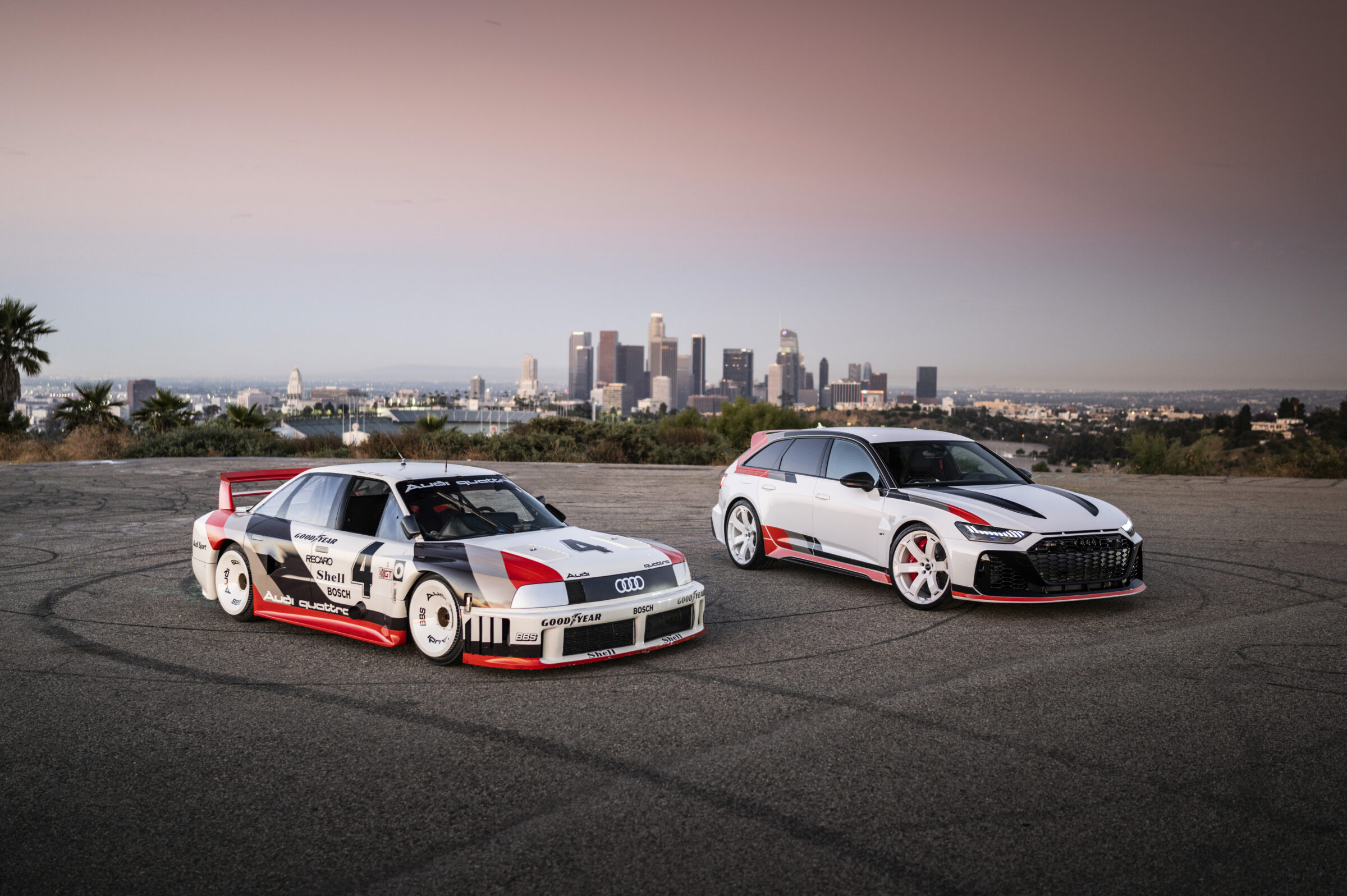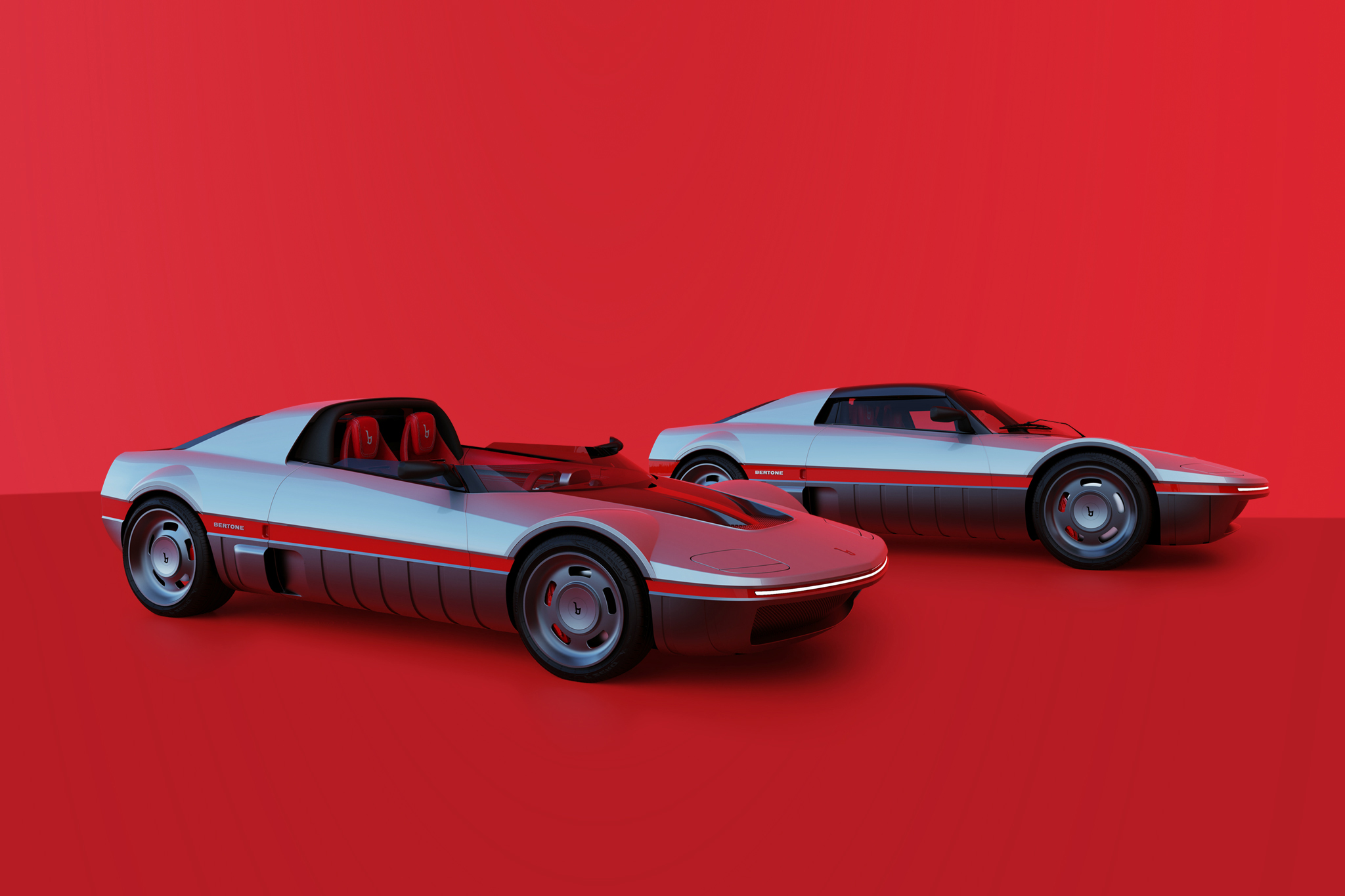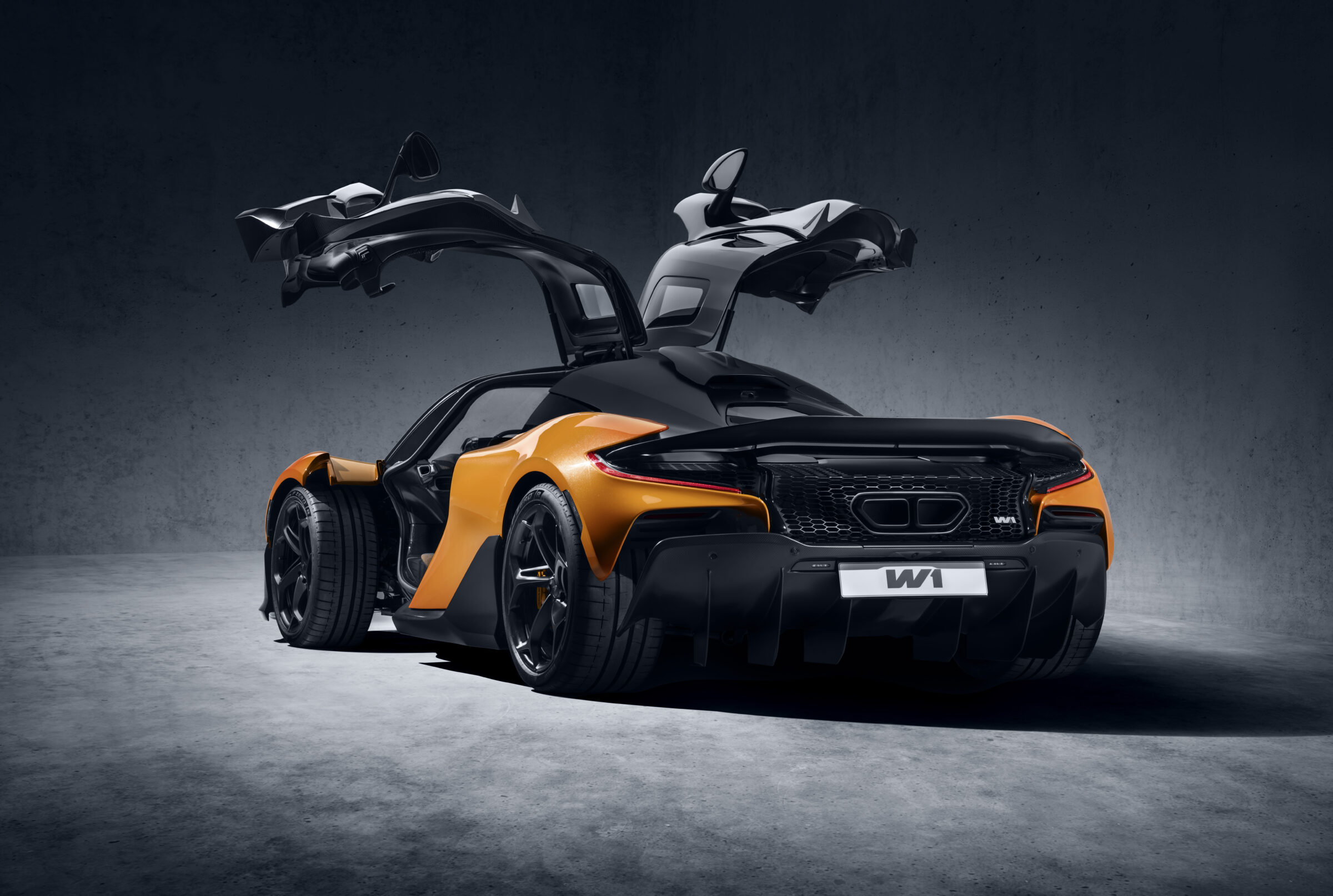Aston Martin DB5 Vantage
The transitions from DB4 Series V to the new DB5 were extremely smooth. In principle, Aston Martin had already made all the important modifications in the fifth series of the predecessor model, which would then make up the new DB5. Both the slightly raised roofline and the headlamps behind clear-glass covers originally developed for the DB4 GT or the three small individual tail lights on each side were already in place, and the last major difference was an enlarged six-cylinder engine in the DB5, which debuted at the end of 1963. Instead of the previous 3.8 liters, there were now four liters of displacement, from which 210 kW/286 hp and 390 newtonmeters of torque were extracted by means of three SU balanced-pressure carburettors. In this way the normal DB5 reached a topspeed of 229 kph (142 mph). For the spurt to 62 mph Aston Martin indicated 7.1 seconds.
In addition to the coupé, which is typically called ‘Saloon’, the British sports car manufacturer also offered a two-seater Convertible for two years. In this short period of time, only 123 units were produced, of which 19 were left-hand drive. The external company Harold Radford Coachbuilders also made 12 examples of a two-door Shooting Brake. Of course the Aston Martin DB5 gained special fame through its appearance in ‘James Bond – Goldfinger’ from 1964, for whose production, however, a DB4 Vantage prototype was used next to a DB5. Due to the great response from the audience, the film company ordered two more DB5s for the follow-up film ‘James Bond – Fireball’ (1965) and at the same time continued to use the prototype upgraded with Q special parts. Afterwards it took 30 years before the DB5 came to screen honours again with 007 in ‘James Bond – Goldeneye’. This was followed by ‘James Bond – Tomorrow Never Dies’ (1997), ‘James Bond – Casino Royale’ (2006), ‘James Bond – Skyfall’ (2012), ‘James Bond – Spectre’ (2015) and finally ‘James Bond – No Time to Die’ (planned for this year, but postponed to 2021 due to the Corona pandemic), in which the British sports car was in the limelight for a varying length of time.
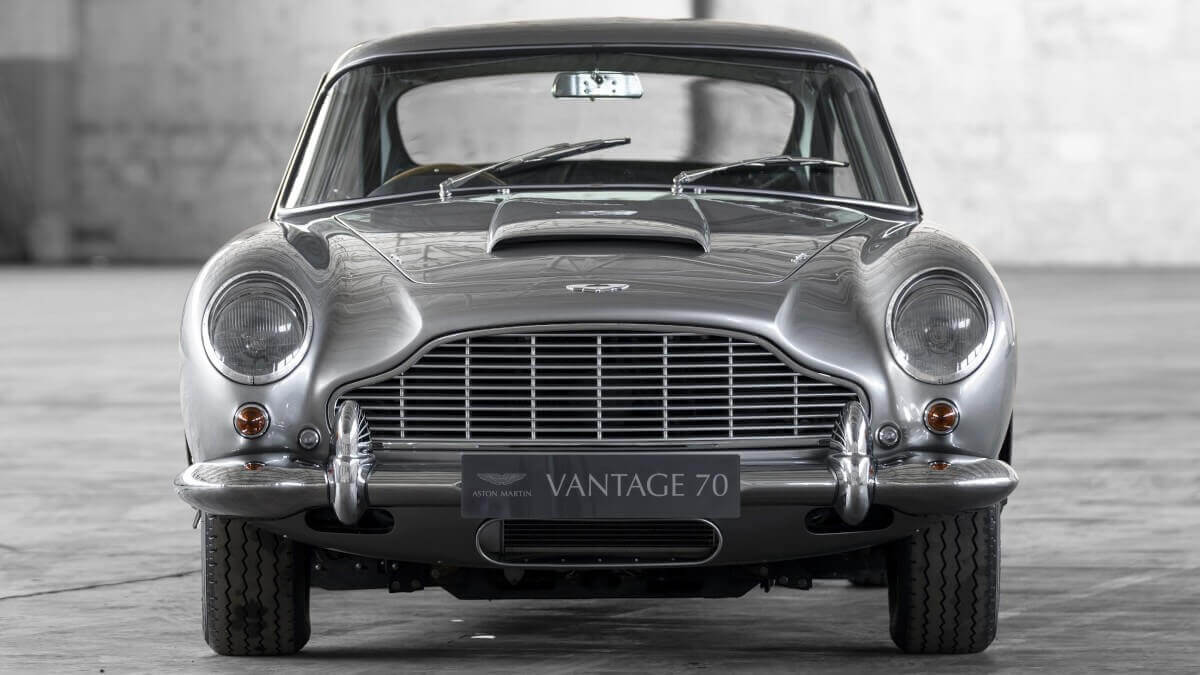



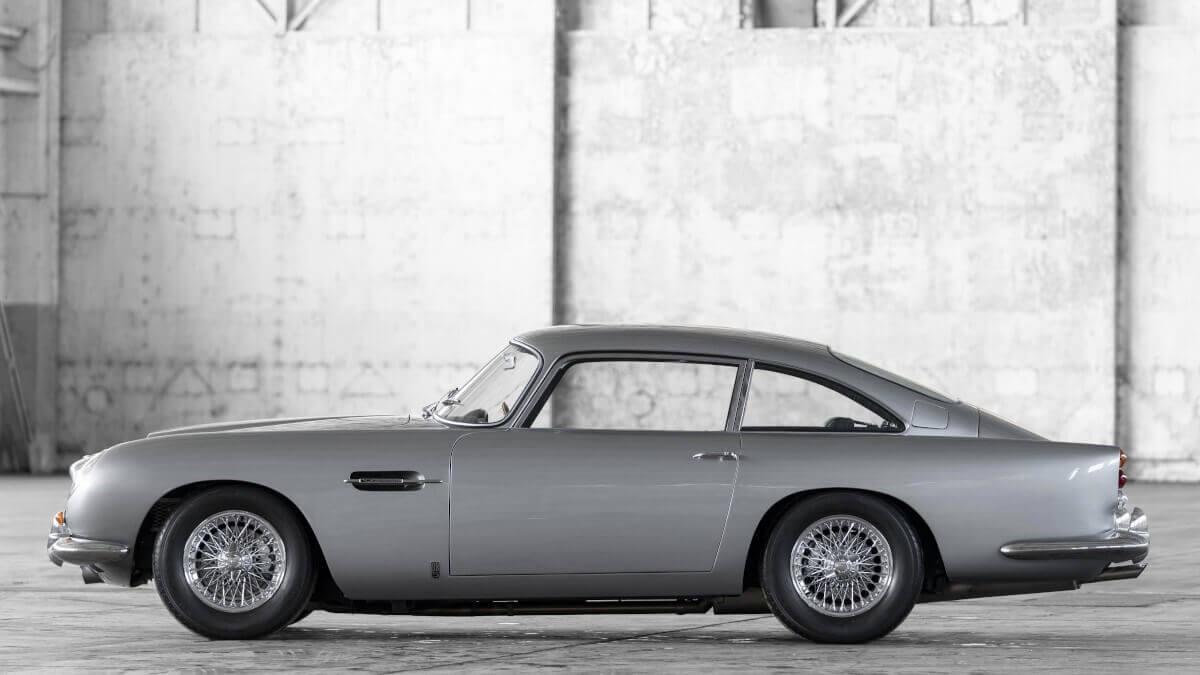

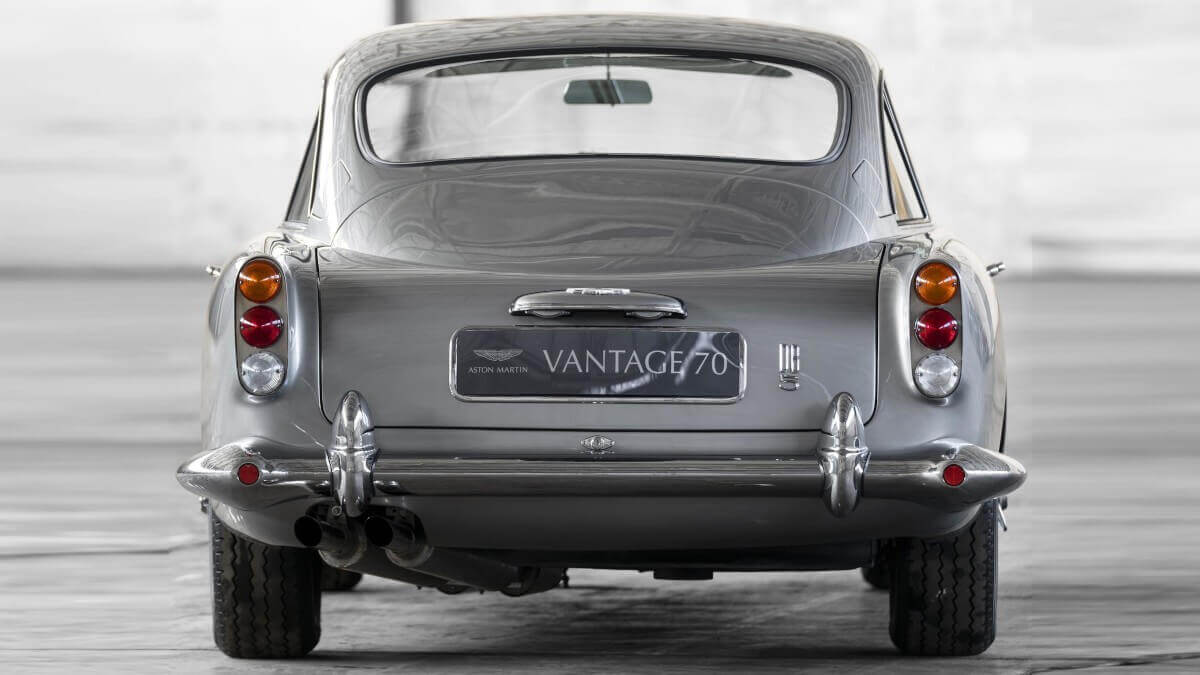









But now we return to the subject of Vantage, whose 70th anniversary we celebrate a little with our series of articels. The DB5 was also available from the factory in a Vantage version, which was available for both the Saloon and the Convertible. Three Weber double carburettors and a little fine-tuning of the engine increased the output to around 320 hp. The difference between our world today and the debut year 1965 can best be seen in the press release that Aston Martin published at the time of the world premiere of the DB5 Vantage at the Geneva Motor Show: “With this extra power, more rapid acceleration and higher average speeds are ensured.” Nowadays the kids from Fridays for Future would probably look for some stones… The Vantage package cost £ 158 plus tax at that time, while the base price for the normale DB5 was £ 4,175.
Whether it was the high price or simply too few customers knew about this option is no longer known today. However, of 887 DB5 Saloons built, only 68 received the Vantage package. With the DB5 Convertible, only eight of 123 were fitted with it. Today these cars are sought-after collectors’ items, some of which are priced in the seven-figure range.
Images: Aston Martin


